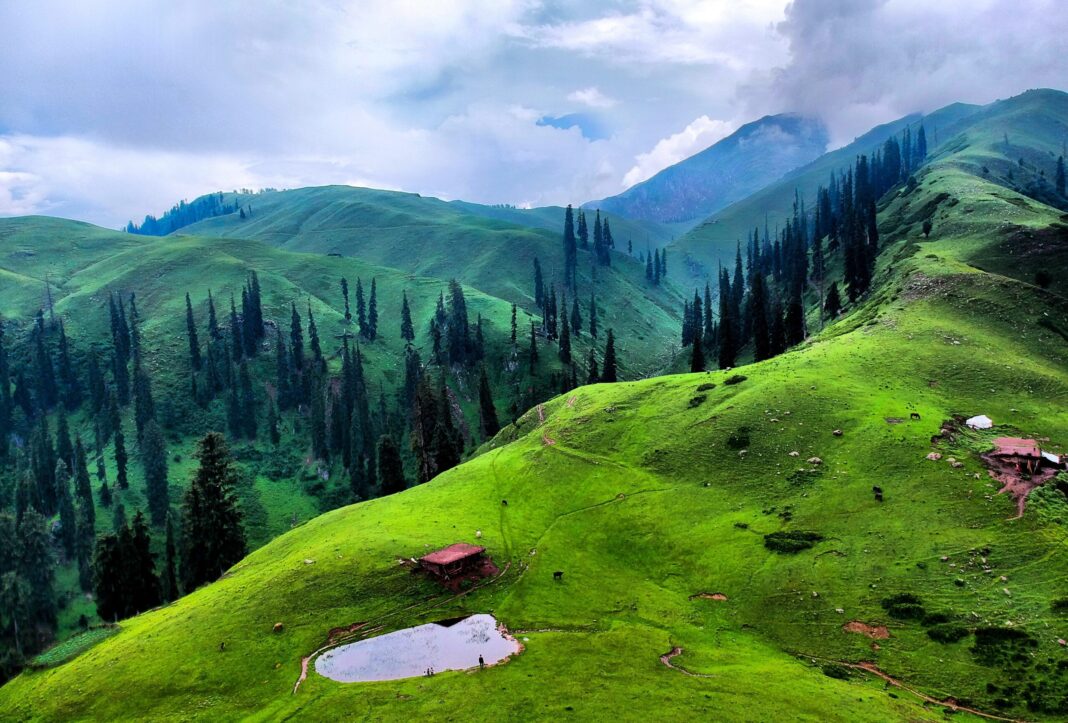
Over the last few weeks, floods in Pakistan have caused more than 1000 deaths and displaced over ten million people. The deadly monsoon season has submerged one third of Pakistan, according to ESA satellite images, threatening to create secondary disasters as food becomes scarce and infectious diseases threaten millions. More than 1,100 people have died since mid-June—nearly 400 of them children—and millions have been displaced. Aid agencies warn that the number of casualties is likely to rise with millions more at risk of illness caused by what the United Nations has called “a monsoon on steroids.”
This is a stark warning about the consequences of global warming.
Pakistan is a highly vulnerable country to flooding, and climate change is making that danger even worse. But while the government has taken some steps to prepare for these events, it hasn’t done enough—and with no coordinated global action on climate change and its consequences, we’re all at risk of more disasters like this one.
Since July of 2022, torrential rainfall from monsoon clouds has caused deadly flooding in eastern Pakistan.
The rains arrived during a time when people were not prepared for them due to lack of government planning and preparation, poor drainage systems, and inadequate warning systems. As the rains poured down, the Indus River rose quickly, causing it to flood its banks. By August 5th over 20 million people had been impacted by these floods with more than one million left homeless or displaced. In addition there have been at least 1,200 deaths as well as hundreds injured as a result of this natural disaster.
Pakistan has been hit by severe flooding for over a decade now. In 2010, the country saw its worst floods in living memory: 20 million people were affected and more than 1,800 lives were lost. The floods of 2011 killed about 2,000 people and affected almost 17 million others. And in 2017, a massive flood caused by monsoon rains killed at least 1,600 people and affected 21 million others—around one-fifth of the country’s population.
Pakistan is one of the most vulnerable countries to climate change, according to the World Bank. It’s located right on top of a major fault line that could push up sea levels and cause even more damage if there are any natural disasters or manmade climate change impacts.
The flooding was caused by a combination of factors—including heavy rainfalls and melting snow due to global warming—but it was also exacerbated by human activity such as deforestation and dumping waste into rivers, which can lead to increased runoff during heavy rains. This makes Pakistan an example for other nations experiencing similar issues because it shows how these problems don’t only affect those who live in low-lying areas like coastal cities; they can happen anywhere if proper policy isn’t instituted beforehand.
Millions of Pakistanis have been forced to flee as floodwaters have destroyed their homes. They are being forced to live in temporary shelters, move to higher ground, and even relocate across provincial borders.
Global warming will become a serious threat to our survival if we don’t tackle it soon.
The floods that hit Pakistan in 2010 and 2011 were devastating enough to make headlines around the world. But what’s happening now is different; it’s more than just another record-breaking flood event—it represents a growing trend of extreme weather events around the world as our planet warms up. Climate change will affect all of us in some way. It is a threat to our entire planet and thus also poses a threat to our health, food supply and economy. If we do not act now then we will face extreme weather events like Pakistan floods every day. If we don’t act now:
- Flooding will become more frequent and intense. The number of people displaced by flooding is expected to increase by about 50 percent by 2050, according to the World Bank. In Pakistan alone, at least 3.2 million homes have been destroyed by floods in recent years—and that’s just one country.
- Food prices are expected to rise sharply due to a decrease in agricultural productivity caused by droughts and heat waves. A study published earlier this year found that drought-related food price increases cost around $100 billion per year globally between 2002 and 2011; these costs could increase even further as climate change exacerbates these problems in the next few decades.
- Heat waves are likely to kill thousands more people each year than they do today — with elderly people at greatest risk from rising temperatures. The number of heat wave deaths from acute causes (such as heart attacks) could increase from 1,700 per year today to 11,000 per year by 2080 if no action is taken now on climate change, according to research published last year in Nature Climate Change.
Conclusion
The rise in global temperature is affecting our environment greatly. The ice caps are melting, the temperature of the ocean is accelerating, hurricanes are becoming more severe, coral reefs are dying and forests are burning. We must find the cause and act now. Rich and poor countries alike need to work together if we are to make any headway in slowing down the global warming process. The destruction that it brings is a problem for all of us, and not just one section of the population. All countries need to pitch in and help out in fighting climate change in whatever way they can, whether through policymaking or through grassroots efforts.
Action For Humanity is a nonprofit organization that is helping to alleviate the suffering of those in Pakistan. Click here to donate today.











